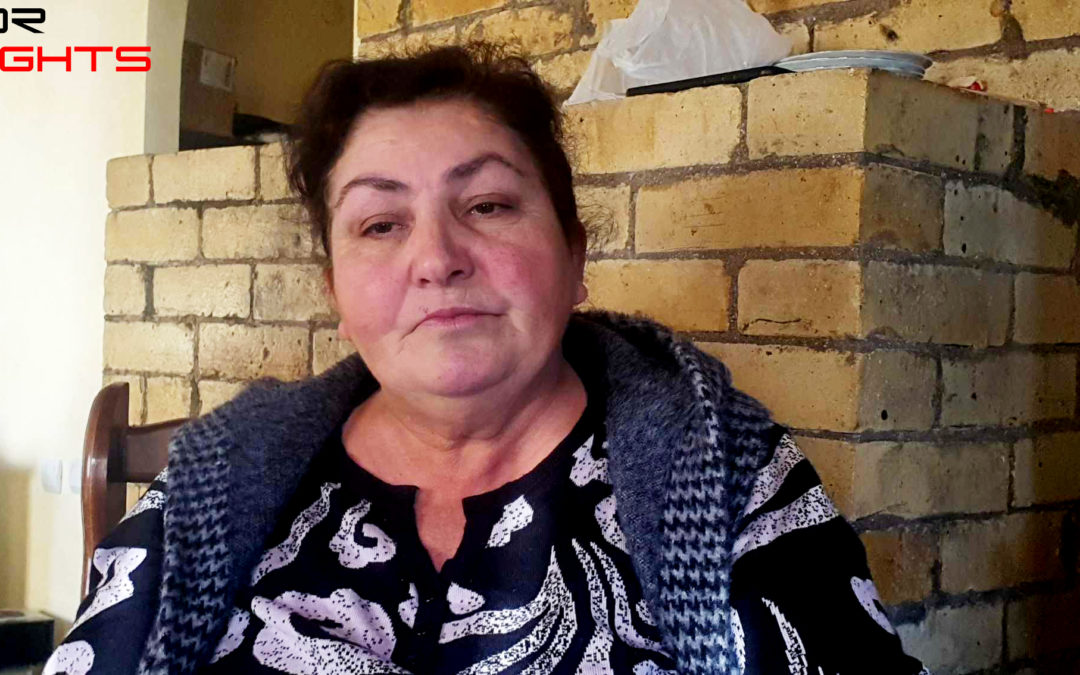The history of every Armenian forcibly displaced from Artsakh is cruel compared to the previous and subsequent ones.
60-year-old Lyudmila Margaryan lived alone in Karmir Shuka village when the September 19 attack began. Although she wanted to believe that nothing had happened, a large-scale attack began on September 19.
“They started shooting at one o’clock. It’s a bit soft to call it shooting: fire was pouring out from all sides. Everyone in the village was crying and running here and there. I went out and heard people saying that a war had started, the Turks had entered the villages. We all gathered in the basement of the school. The shots did not stop all night. In the morning, they said we were leaving the village,” says Mrs. Lyudmila and describes how the path to becoming an immigrant began: “I will put it a little rudely, but I will say that they loaded the cars as they load the sheep into the cars, that’s how they put us into the cars. You can’t imagine what was happening. Somehow, we got out of the village. Half on foot, half by car, we reached the village of Tsvategh (Martuni region, NK). We stayed at the school for four days. There was a blockade: there was no bread, people wanted to help, but what would they give?” Then Mrs. Lyudmila tells how she returned to Karmir Shuka on foot again.
“We stayed for five days, then they told us to come to our homes. I came to our house on foot from Tsvategh. I stayed in our house that day. In the morning the neighbor said, “You have five minutes: the Turks have entered the village. It was a five-minute distance for the Turks to reach our house. We went and stayed that night in Chartar. In the morning, we set off to Gishi to get gas and get out. On that day, it was raining, cold — the same conditions on the road, which was shown in pictures on the road from Stepanakert to Goris. We stayed at the Gishi intersection for 24 hours, then we got the news that the gasoline depot exploded and everyone panicked and got worried. The people set off on foot. Somehow, we reached Stepanakert: I came to my little daughter,” she said.
The woman found her two daughters, son-in-law and grandchildren in Stepanakert. Mrs. Lyudmila’s son-in-law found a malfunctioning military car, repaired it for two days so that they could leave Artsakh. “We came, we brought the families of the victims with us,” she says and tells how the authorities seized that car in Armenia, which served as a bedroom for her grandchildren.
“That car served as a sleeping place for the children: the children slept in the car for a month. My daughters were sleeping at my uncle’s house. The house was very small, there were still displaced people there, and the car was parked at the gate so that the children could sleep in it. They came and took away the car in which the children were sleeping. I got out, I said that the children were sleeping in it. My son-in-law was not at home. I said that the car serves as a room for us. They answered that they were sent to take it: they were from the military police. They took the car and left. They did not think of anything. My son-in-law didn’t get any aid either. He was told that he hasn’t been in Artsakh. When they came and took the car, why didn’t they say you haven’t been to Karabakh, how did you get this car? He brought 40 people in that car; they come and take the car, but they don’t give any help,” says the woman sorrowfully.
There are 10 people in this family: Mrs. Lyudmila, her son, her son-in-law, two daughters and five grandchildren. They live in a country house in the village of Byureghavan, for which they pay 160,000 drams [about $400] in rent and 70,000 drams for electricity. Mrs. Lyudmila’s grandchildren are deprived of the opportunity to get an education, because they do not have the financial means to get to the capital where the universities are from Byureghaban.
One of his sons-in-law, Alexander Babayan, died during the 44-Day War. “He fought very well. He sent us to Yerevan on one of the 1st of the months and he died on the 2nd. We arrived in Yerevan, I called and he was unavailable. He was killed in Jrakan. The remains were given to us six months later, the DNA confirmed his identity in April,” said his wife, Tatev.
Narek Kirakosyan

